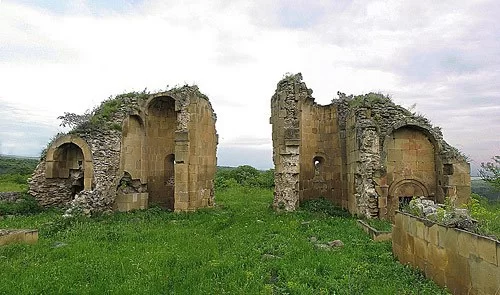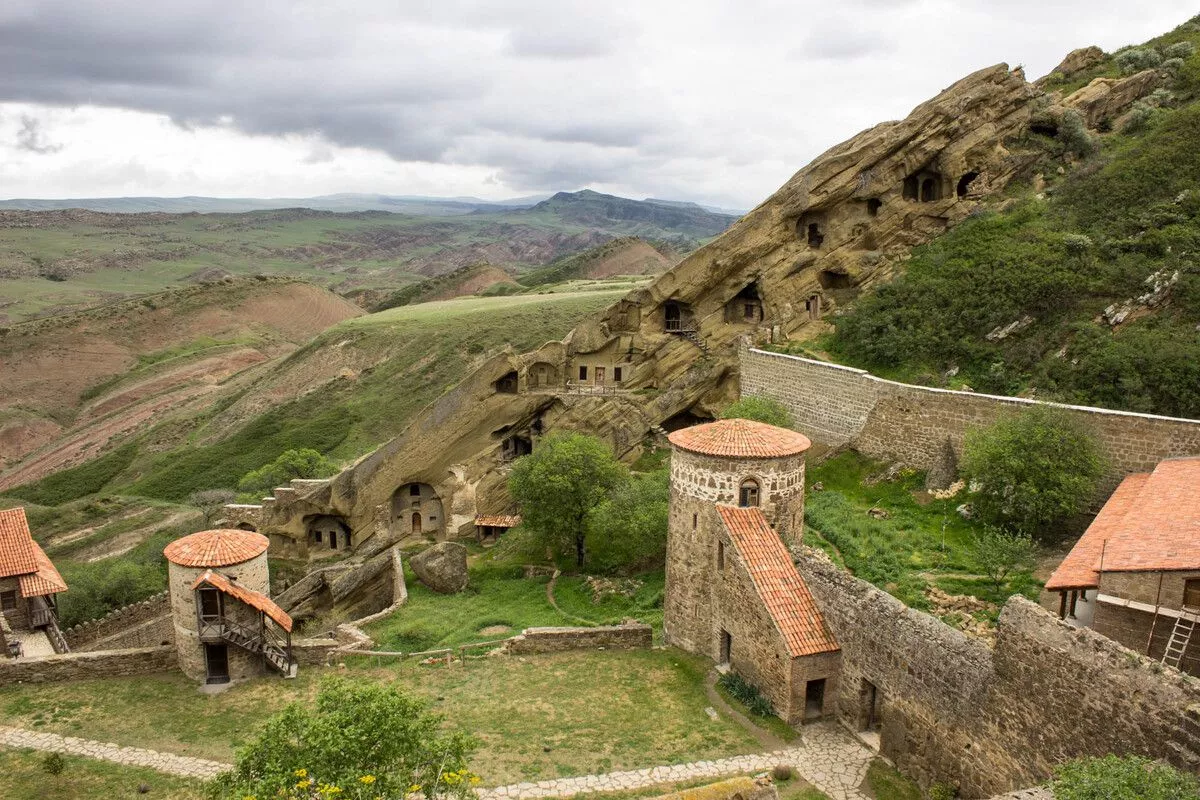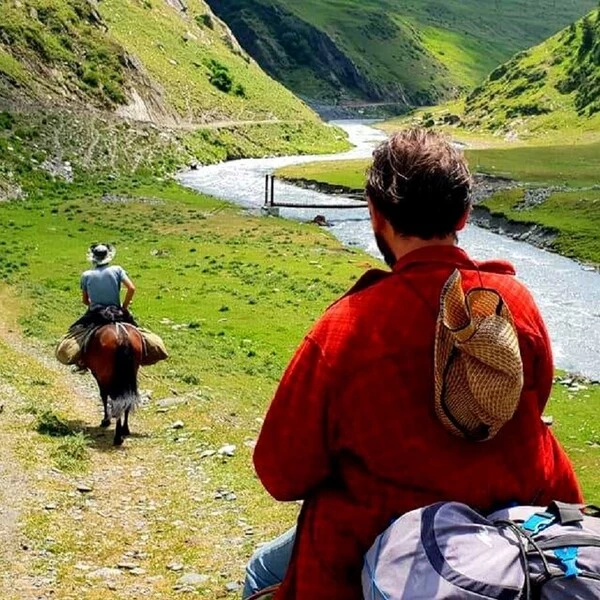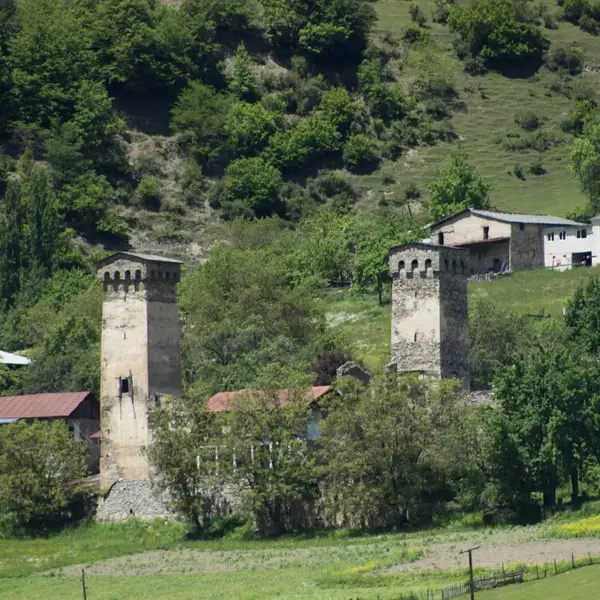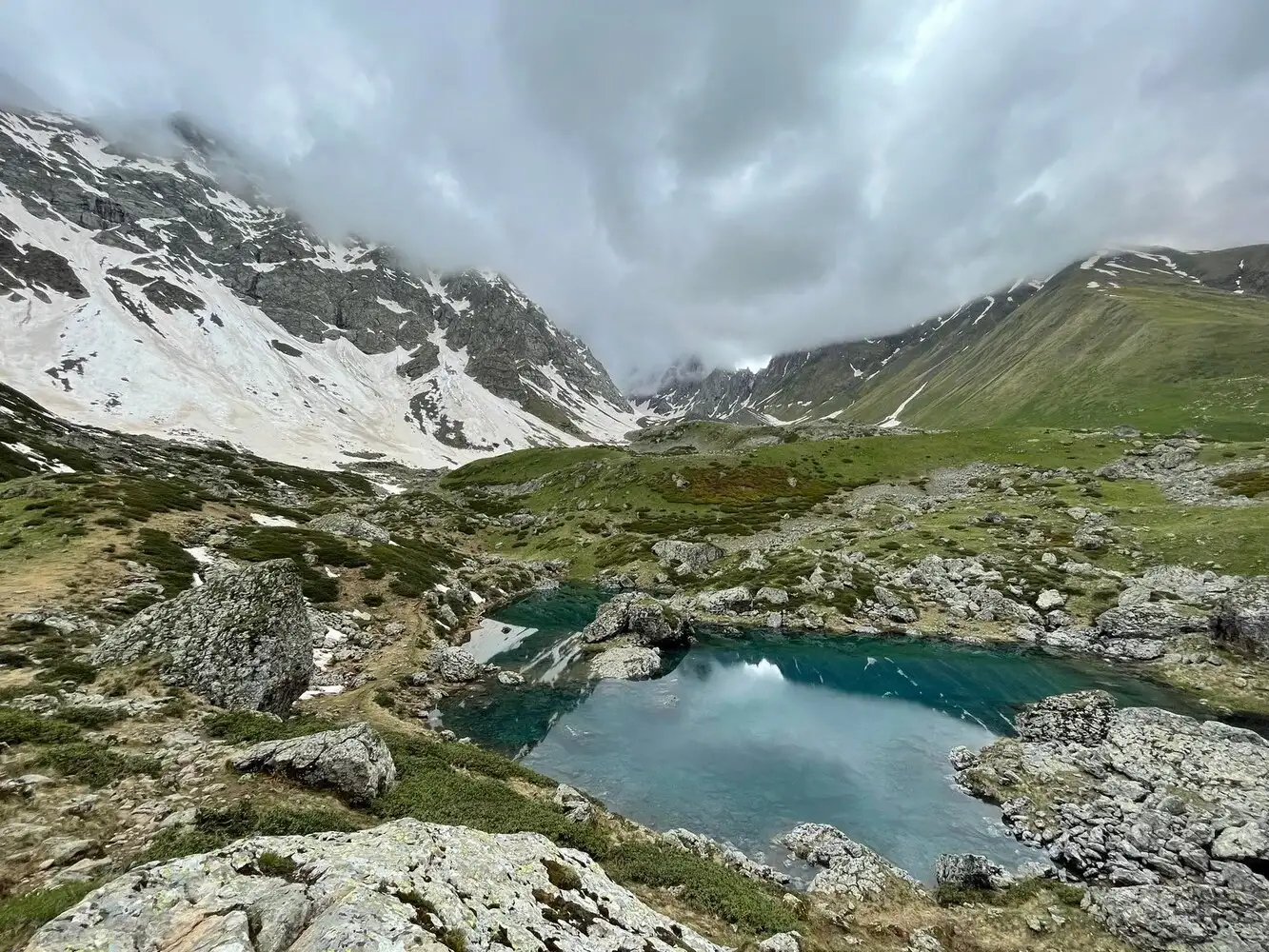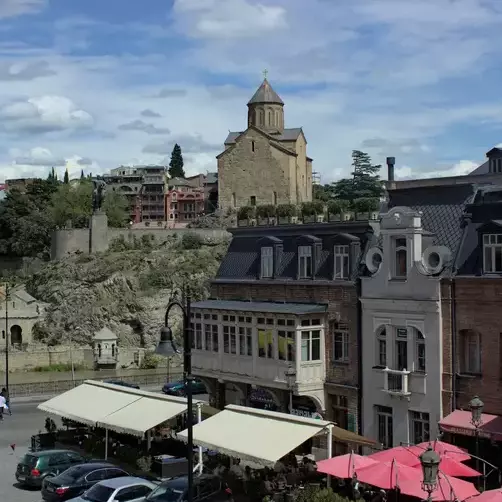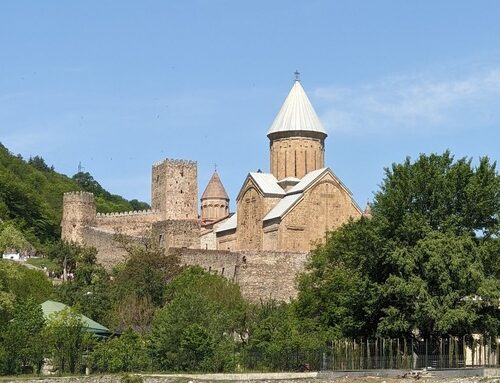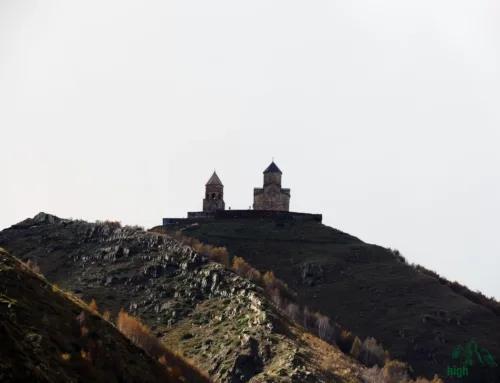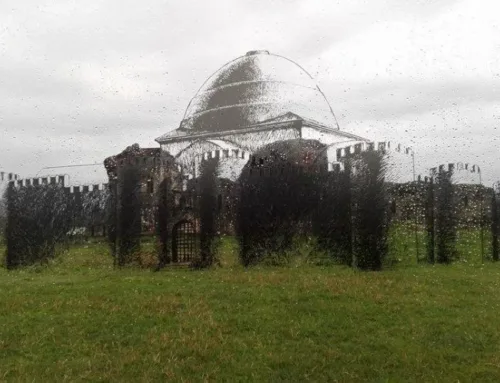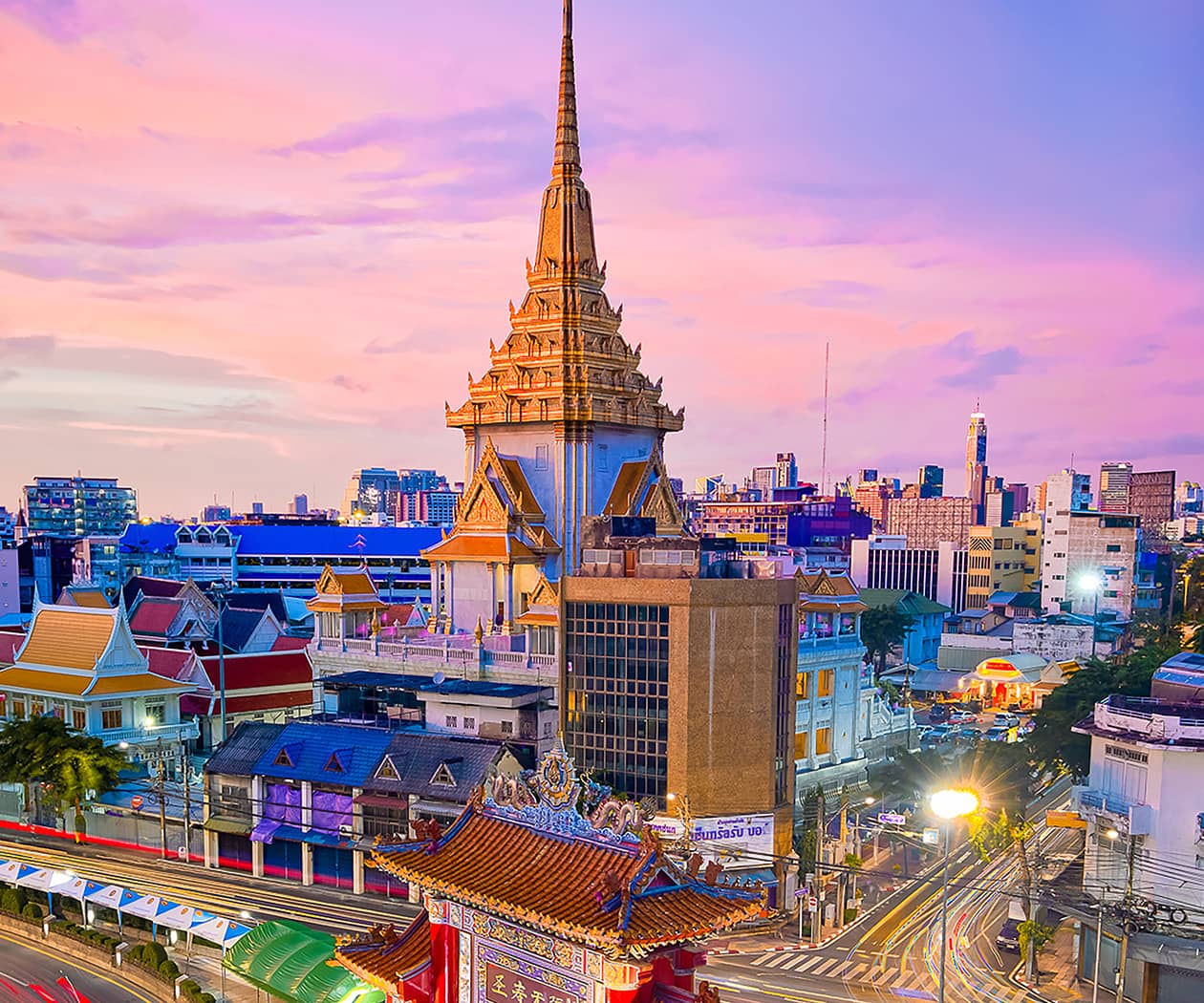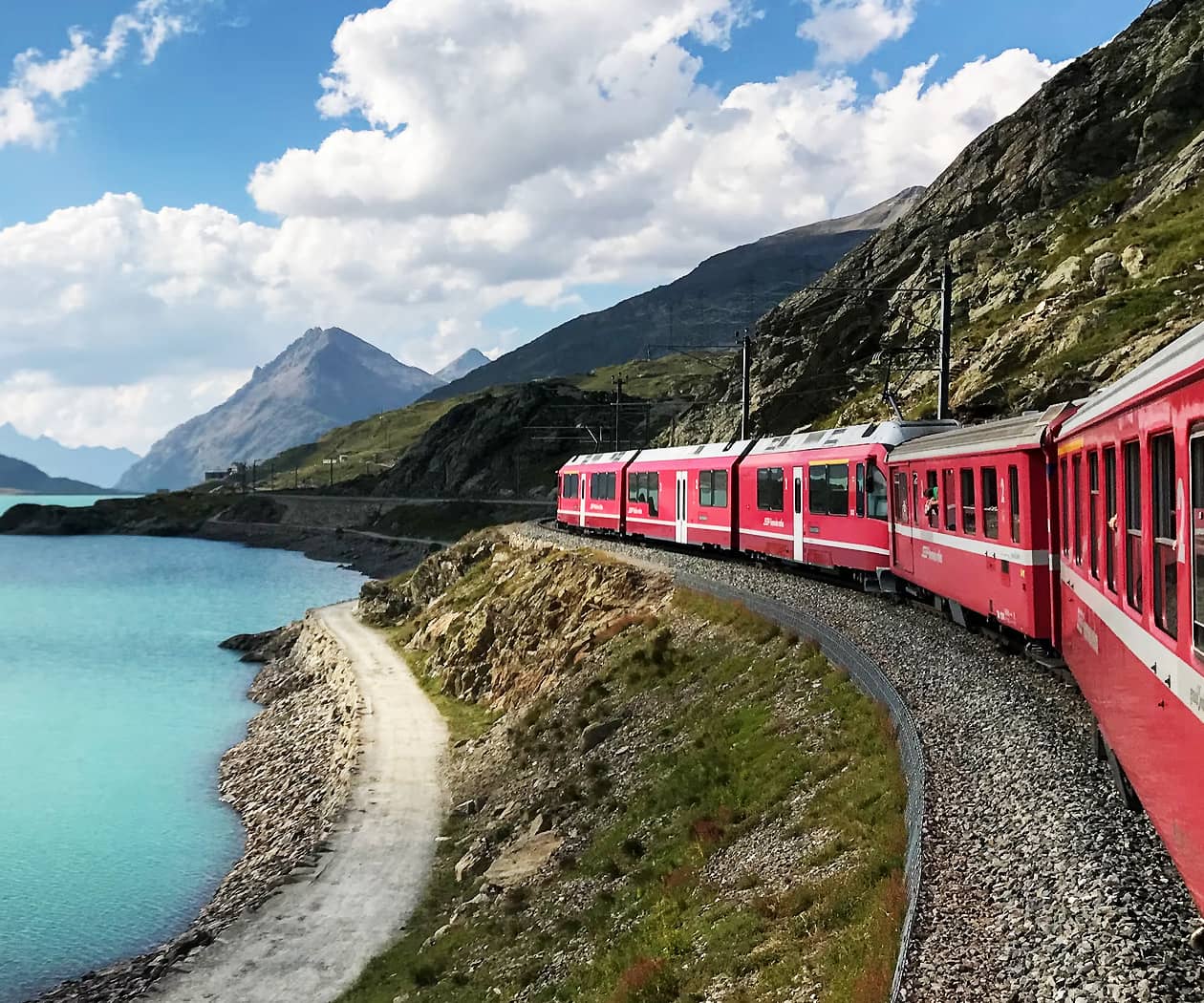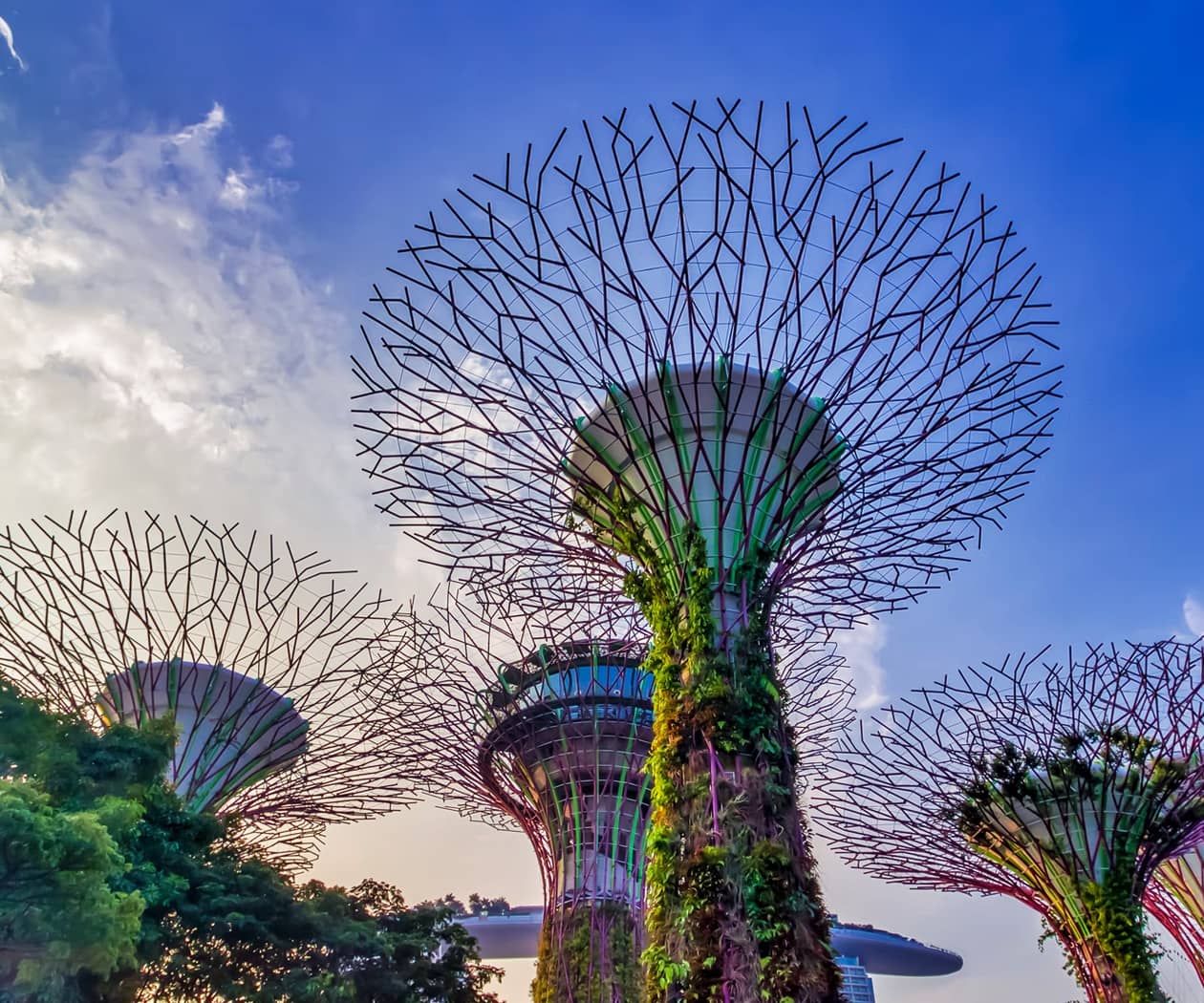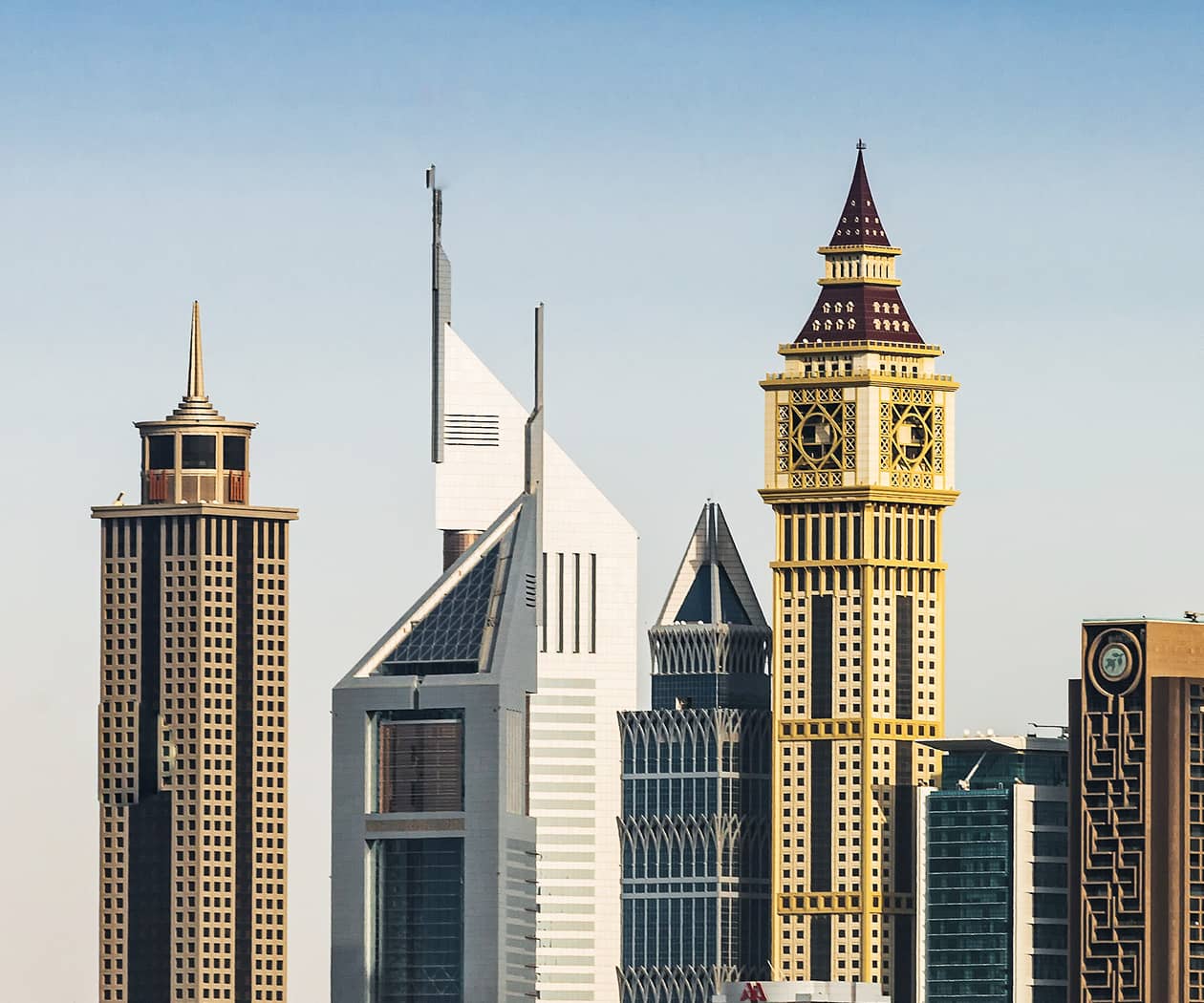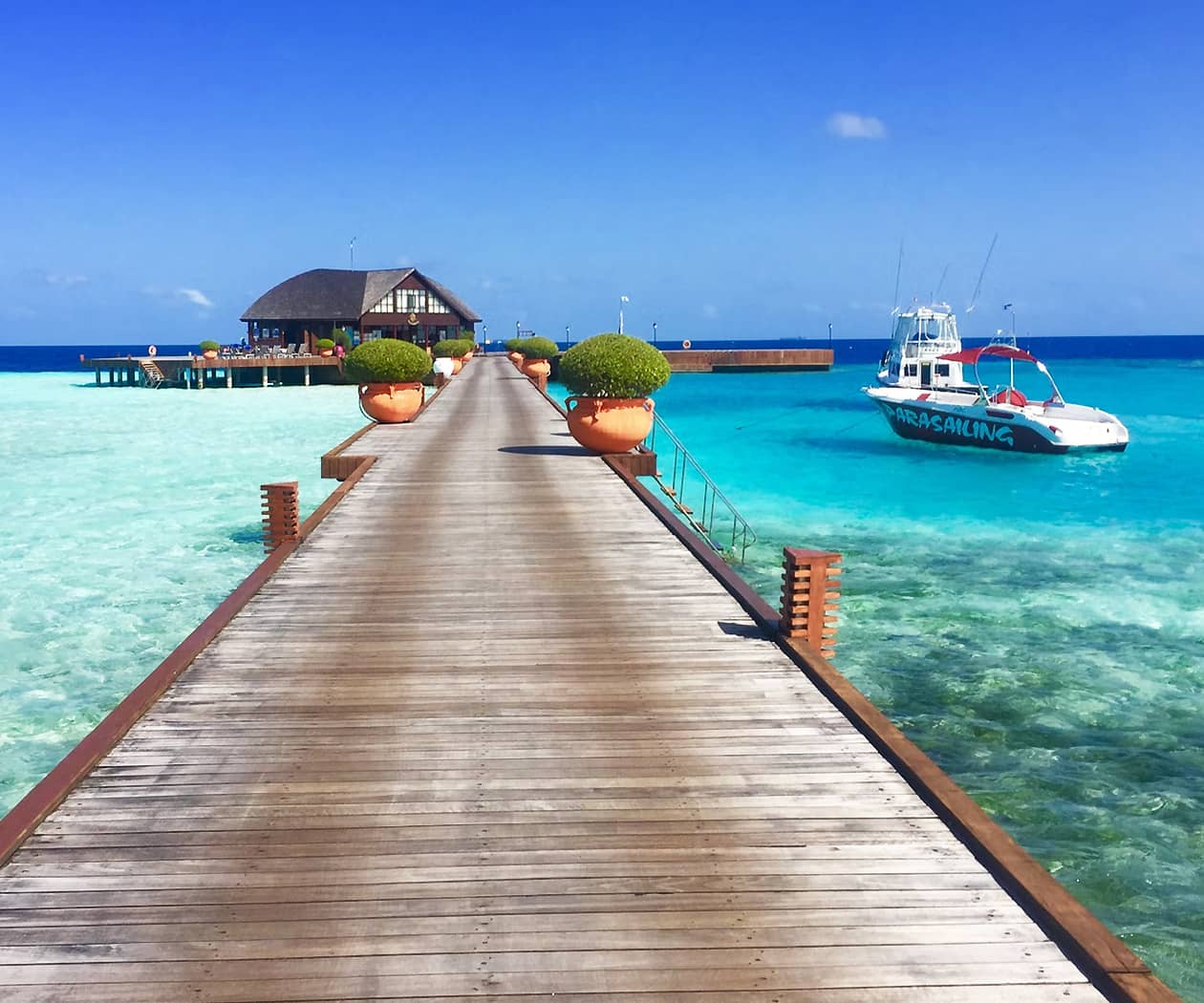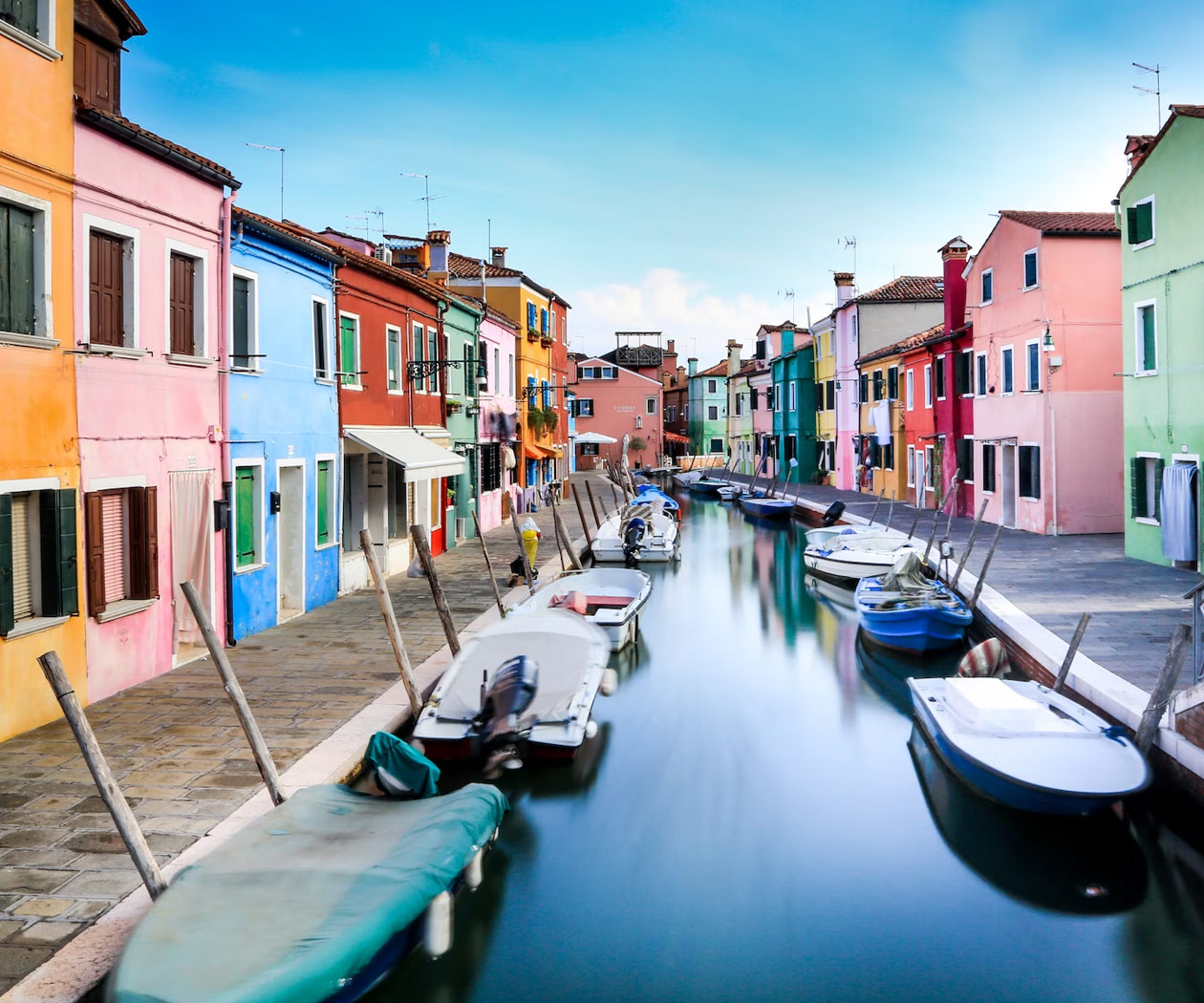Dmanisi Sioni church
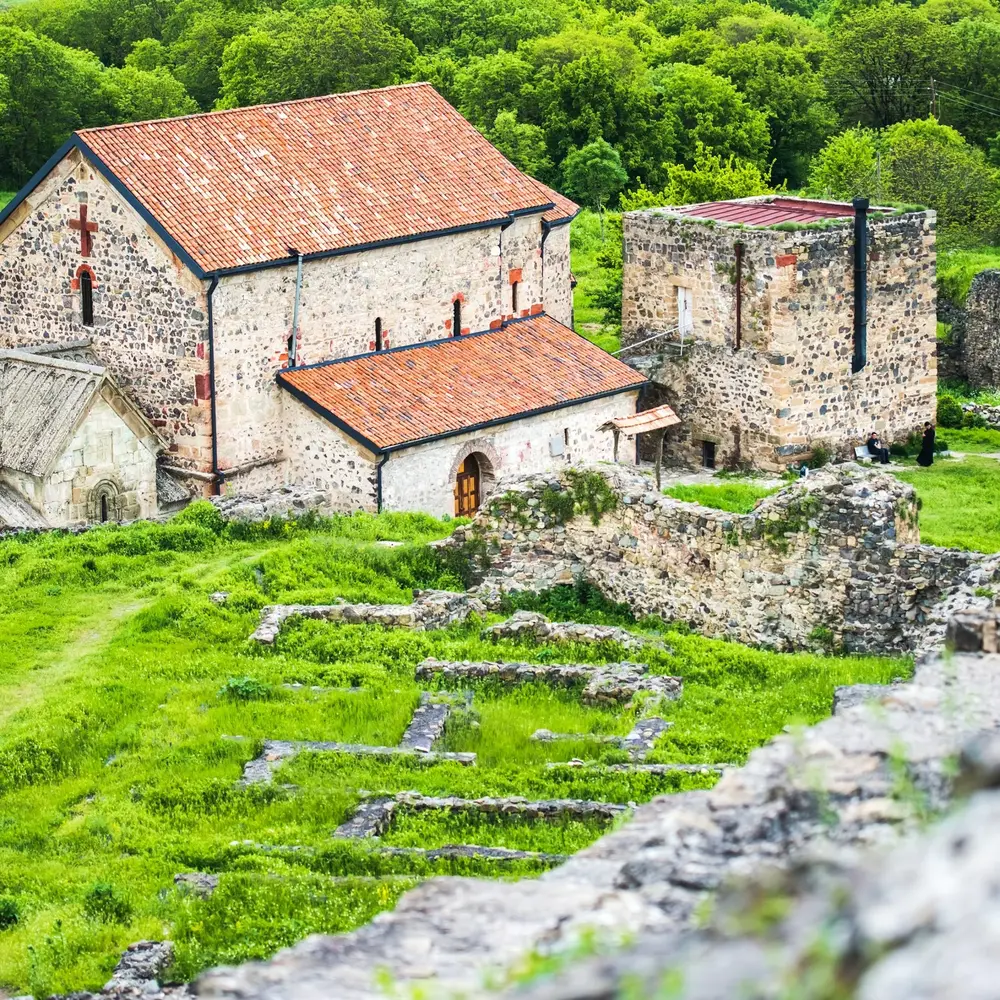
Dmanisi settlement is located some 100 km south-westward of Tbilisi, on the high cape created at the confluence of R.R. Mashvera and Pinesauri in Kvemo Kartli region. For almost one milenium – from IX- XVI century AD Dmanisi had been a developed city and the center of trade with a dense mixed population of many nationalities and confessions.
In the centre of the internal fortress a rather large single nave Sioni Church with the extended semi-circle apse was constructed for the orthodox part of the locals. Internal space, divided by massive rectangular projections and deep vaults in the walls, dark rubble stone masonry with reddish sections inserted on the facades create peculiar impression of austere monumentality. The construction seems to be built in IX-X cc with some traces of refurbishments carried out in later times. Due to southern and northern younger chapels attached to the main body the church has got some resemblance of three-church basilica. The porch built during the reign of Giorgi IV Lasha (1213-1222) adorned with fretwork and raised decoration and cross images curved on neatly hewn stone slab background is the most impressive of the later attachments to the church. Each of its facades has got two pairs of small niches and the whole structure is crowned with a dome supported by slim columns from the east. Wall projections hold the dome from the west. Both elements give the porch a cross-like shape.
Apparently XIII c Georgian craftsmen have found the original way for a reconsideration of architectural motifs of Armenian “Gavits”. Small fragments of wall painting currently preserved only on the sanctuary and northern wall surfaces should be contemporaneous of the porch. Despite they are perished to the level of discolored remains, those fragments still preserve high artistic value.
A rather huge structure used as a bell-tower is located westwards of the church, coupled with XVIII c. small, single-nave chapel situated north-westwards of it. Different rocks used for its construction make this tiny building multicolored.
Check also Dmanisi archaeological museum.
We visit Dmanisi in our one day tour from Tbilisi to Bolnisi and Dmanisi.

